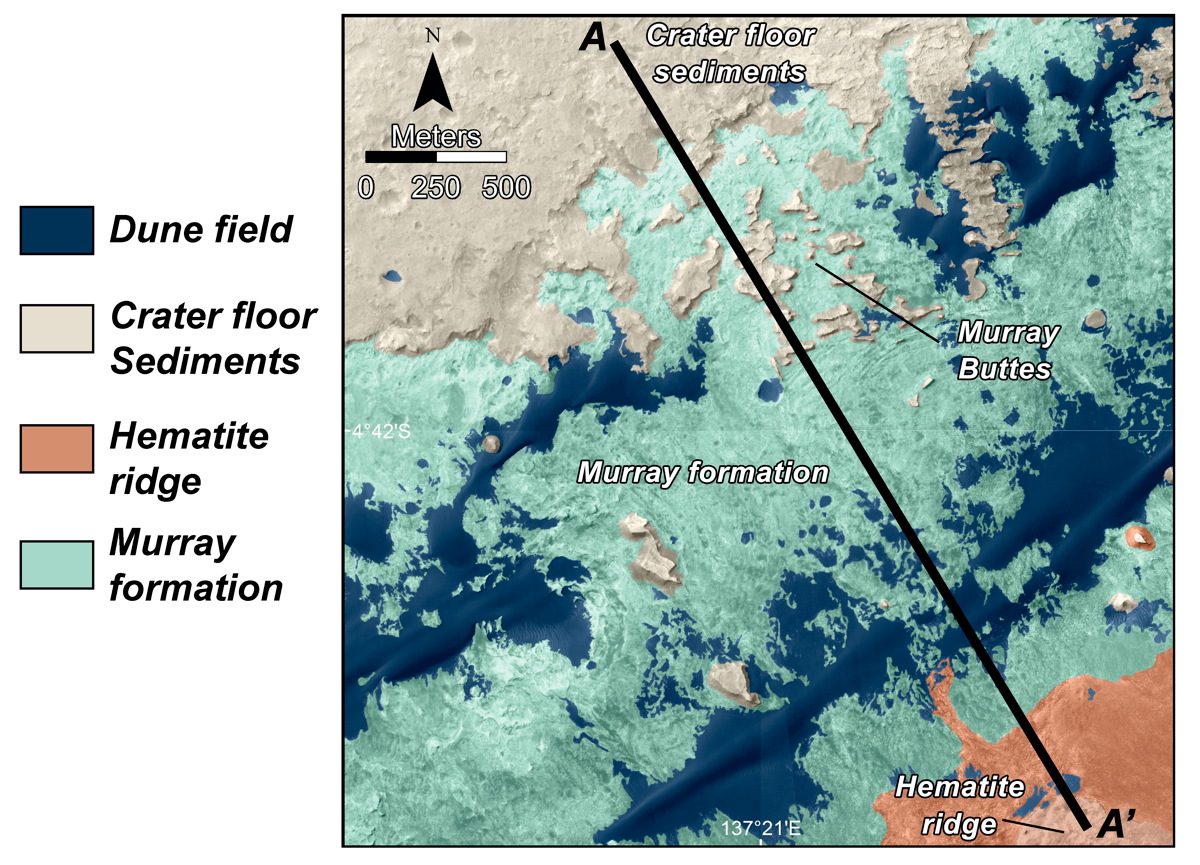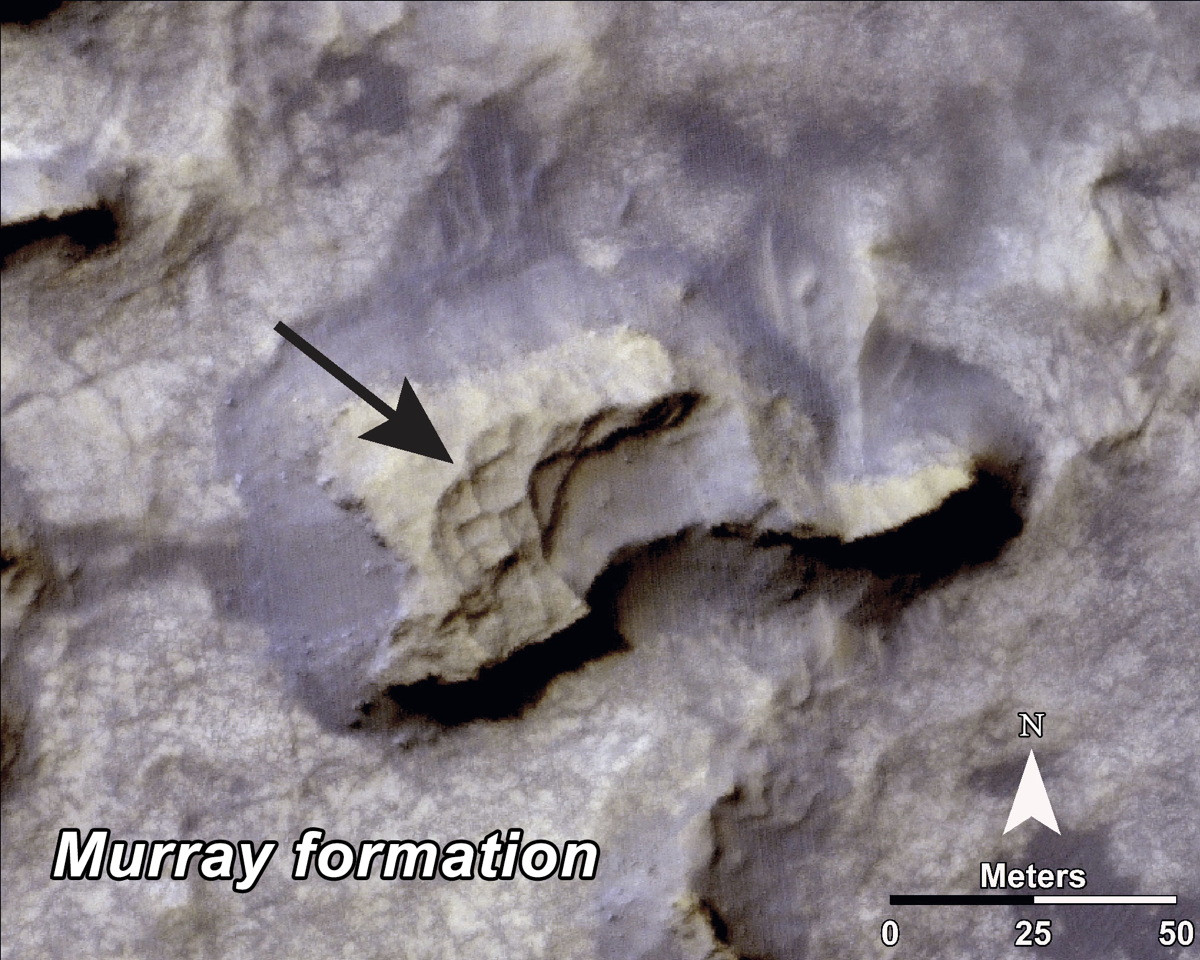NASA's Curiosity Rover on Mars Arrives at Mountain Destination
After two years of driving and drilling on Mars, NASA's Curiosity rover has reached its "far frontier": the base of a giant Martian mountain.
The Curiosity rover has reached the base of the 3.4-mile (5.5 kilometers) mountain Aeolis Mons, unofficially dubbed Mount Sharp, NASA officials announced in a news conference today (Sept. 11). After landing on the Red Planet in 2012 and driving close to 5.6 miles (9 km), Curiosity is now preparing to dig into the Martian dirt, probing the mountain's base for clues about the planet's past.
The announcement also comes on the heels of a somewhat critical science review of the Curiosity mission. [See amazing photos from the Curiosity rover]
"I think the principle recommendation of the panel is that we drive less and drill more," Curiosity project scientist John Grotzinger said during the news conference. "The recommendations of the review and what we want to do as a science team are going to align because we have now arrived at Mount Sharp."
An extended life on Mars
Curiosity has just been approved for a two-year extended mission, and now that the rover has gotten to the base of the mountain, it should drill into more rocks to learn more about Mars' past, said Grotzinger.
"It's really an honor and a privilege for me to be able to tell you all that we have finally arrived at the far frontier that we have sought for so long," Grotzinger said.
Mission controllers on Earth brought Curiosity to Mount Sharp via a somewhat different path than initially planned. Partially due to unexpected wear on the 1-ton rover's wheels and new science data, scientists took the rover on a path to the south, which led to the rover's arrival at the base of the Mount Rainier-sized mountain earlier than expected.
Breaking space news, the latest updates on rocket launches, skywatching events and more!
Curiosity will now start examining an area called Pahrump Hills instead of rolling on to another point called Murray Buttes and moving into the mountain's terrain there as previously planned, according to NASA officials.
"It has been a long but historic journey to this Martian mountain," Grotzinger said in a statement. "The nature of the terrain at Pahrump Hills and just beyond it is a better place than Murray Buttes to learn about the significance of this contact. The exposures at the contact are better due to greater topographic relief."
The Curiosity rover landed in the Gale Crater on Mars in August 2012 after launching to space in 2011. The $2.5 billion Curiosity mission accomplished its primary objective by discovering that Mars did once have the conditions for habitability.
Scientists controlling the rover eventually want to examine the sedimentary layers of the foothills of Mount Sharp to see if they have preserved evidence of Mars' transition from a warm, wet world to the cold and dry one we see today.
Signs of past habitability
In September 2012, just one month after landing, Curiosity found signs of past habitability when exploring an ancient streambed that may have flowed for more than 1,000 years in the Red Planet's past.
By analyzing samples taken by Curiosity a few months later, scientists found that billions of years ago, the Martian environment — at least the one explored by Curiosity — was habitable.
Scientists have also suggested that the lake-and-stream system could have played host to simple life for millions of years. The rover, however, has not found any evidence of microbial life, and it was not designed to detect it. (A new car-size spacecraft scheduled for launch to Mars in 2020 is being crafted to look for signs of past life.)
Follow Miriam Kramer @mirikramer and Google+. Follow us @Spacedotcom, Facebook and Google+. Original article on Space.com.

Miriam Kramer joined Space.com as a Staff Writer in December 2012. Since then, she has floated in weightlessness on a zero-gravity flight, felt the pull of 4-Gs in a trainer aircraft and watched rockets soar into space from Florida and Virginia. She also served as Space.com's lead space entertainment reporter, and enjoys all aspects of space news, astronomy and commercial spaceflight. Miriam has also presented space stories during live interviews with Fox News and other TV and radio outlets. She originally hails from Knoxville, Tennessee where she and her family would take trips to dark spots on the outskirts of town to watch meteor showers every year. She loves to travel and one day hopes to see the northern lights in person. Miriam is currently a space reporter with Axios, writing the Axios Space newsletter. You can follow Miriam on Twitter.



